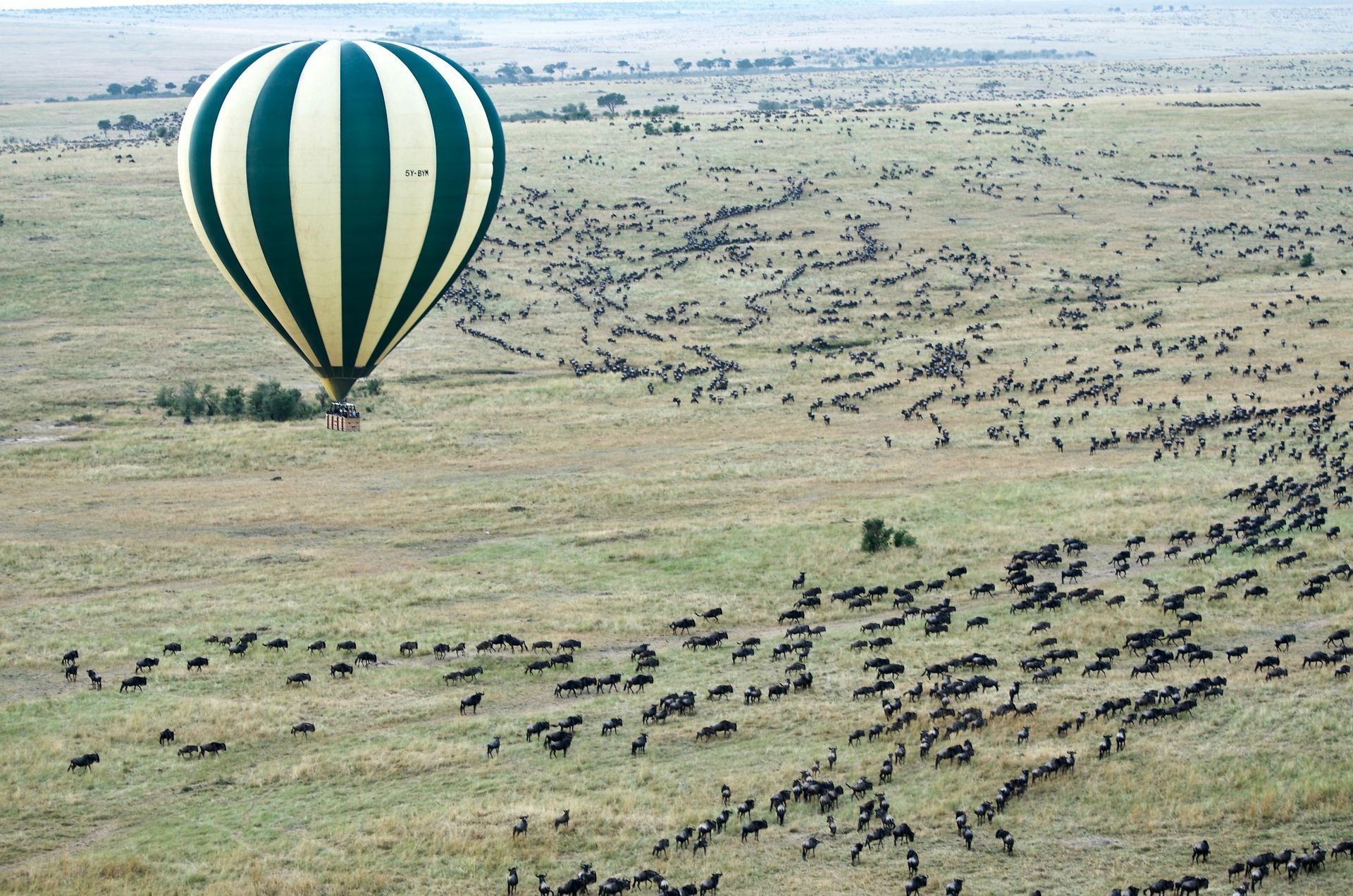
KENYA
The home of the safari
Kenya is a land of striking contrasts and unparalleled beauty. With its sweeping savannahs, lush highlands, and the turquoise waters of the Indian Ocean, this is where the modern safari began in the early 1900s. Kenya captivates travellers with its diverse landscapes. From the iconic Masai Mara National Reserve, famed for the Great Wildebeest Migration, to Amboseli National Park with its breathtaking views of Mount Kilimanjaro, Kenya is begging to be explored.
Home to diverse ethnic groups, each contributing to the country’s rich tapestry of traditions, Kenya offers a unique blend of natural wonders and cultural heritage that makes it an extraordinary dream destination for adventurers and nature lovers alike, promising unforgettable experiences in every corner of this captivating country.
EXPLORE THE HIGHLIGHTS

THE MASAI MARA NATIONAL RESERVE
Spanning approximately 1,510 square kilometres and renowned for its diverse wildlife and stunning landscapes, the "Mara" is co-host of the spectacular Great Wildebeest Migration that sees millions of wildebeest and zebra traverse the plains in search of greener pastures. The reserve features a variety of habitats, including savannahs and woodlands, and is home to numerous species and vibrant birdlife. Cultural interactions with the local Maasai community further enrich the experience, making the Masai Mara a premier destination for safari adventures and a showcase of Kenya's natural beauty.
KENYA TRAVEL TIPS
When travelling to Kenya, being well-informed can enhance your experience and ensure a safe journey. Here are some essential tips:
VISAS
Many nationalities, including those from the UK, US, and EU, require a visa to enter Kenya. E-visas can be obtained online before your trip, making the process convenient.
HEALTH
Kenya is a malaria-risk area, particularly in lowland regions, so it’s advisable to take anti-malarial medication and use insect repellent. Check with a healthcare professional about recommended vaccinations, including yellow fever if arriving from a high-risk country. Carry a basic first aid kit for any minor ailments.
CURRENCY
The official currency is the Kenyan Shilling (KES). ATMs are widely available in urban areas, but it’s wise to carry cash when visiting rural regions or national parks, as card facilities may be limited.
BEST TIME TO VISIT
The dry season, from June to October, is ideal for wildlife viewing, as animals are easier to spot around water sources. The Great Migration, occurring between July and September, is a highlight for many visitors. The rainy season (November to May) can be lush and beautiful but may present challenges in accessing some parks.
PACKING ESSENTIALS
Lightweight, breathable clothing for the daytime and warmer layers for cooler evenings are recommended. Comfortable walking shoes, sun protection (hat, sunglasses, sunscreen), and a quality camera are essential for capturing the stunning landscapes and wildlife. Binoculars are also useful for spotting animals from a distance.
SAFETY
Kenya is generally safe for tourists, but it’s wise to stay vigilant. Avoid displaying valuables and be cautious in crowded areas. When on safari, follow the guidance of your guide to ensure safety around wildlife.
CULTURAL RESPECT
Kenya is home to diverse cultures and communities. Respect local customs and traditions, especially when visiting rural areas or tribal lands. Engaging with local people can enrich your experience and provide insight into their way of life.
CONSERVATION AWARENESS
Kenya places great emphasis on wildlife conservation and eco-tourism. Be mindful of the environment and wildlife; avoid single-use plastics and support responsible tourism practices to help preserve the country’s natural beauty.
CONTACT US
We will get back to you as soon as possible.
Please try again later.
Interested in a Kenya safari?
Would you like to visit Kenya with African Holidays and experience the best this stunning East African country has to offer the avid traveller?
Please feel free to get in touch and let's talk about your options and the things you'd like to see and do.
Our talented team of travel designers are standing by to make your safari dreams come true!
CONTACT US
We will get back to you as soon as possible.
Please try again later.
Cape Town, South Africa Tel: +27 61 540 3068 Email: info@africanholidays.net
All Rights Reserved | African Holidays (PTY) Itd
Designed & powered by: The Safari Collective
